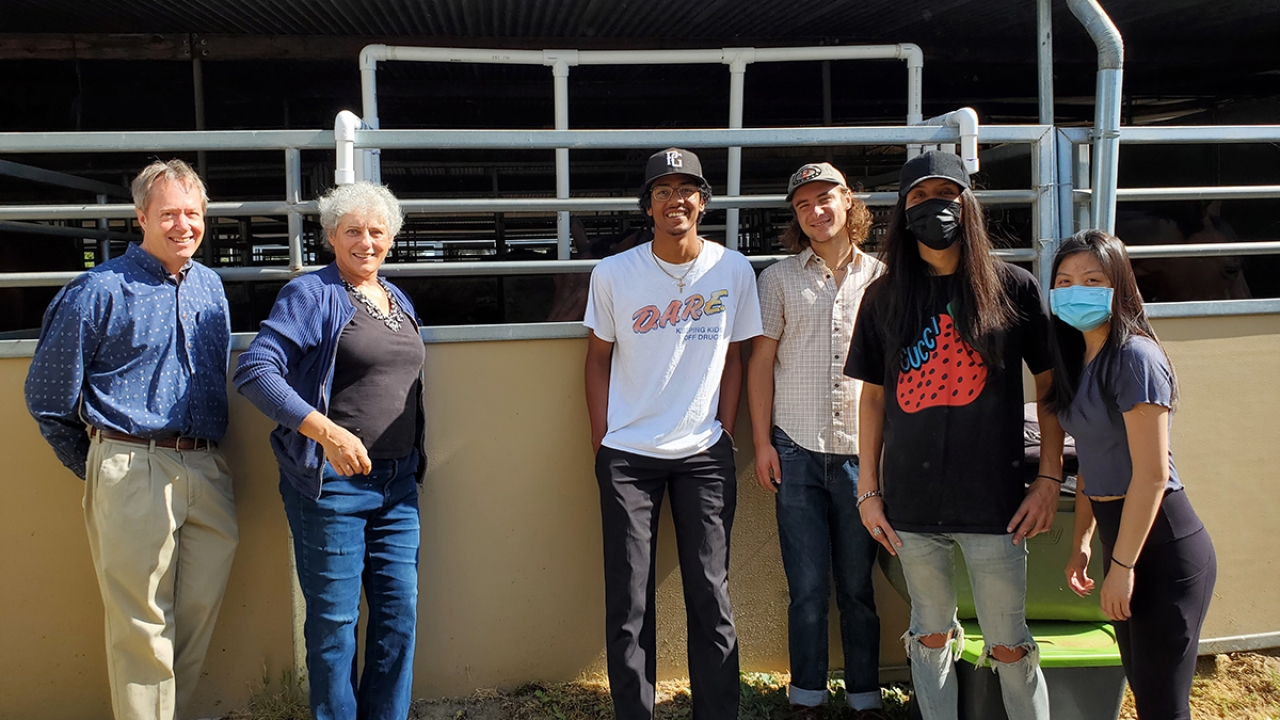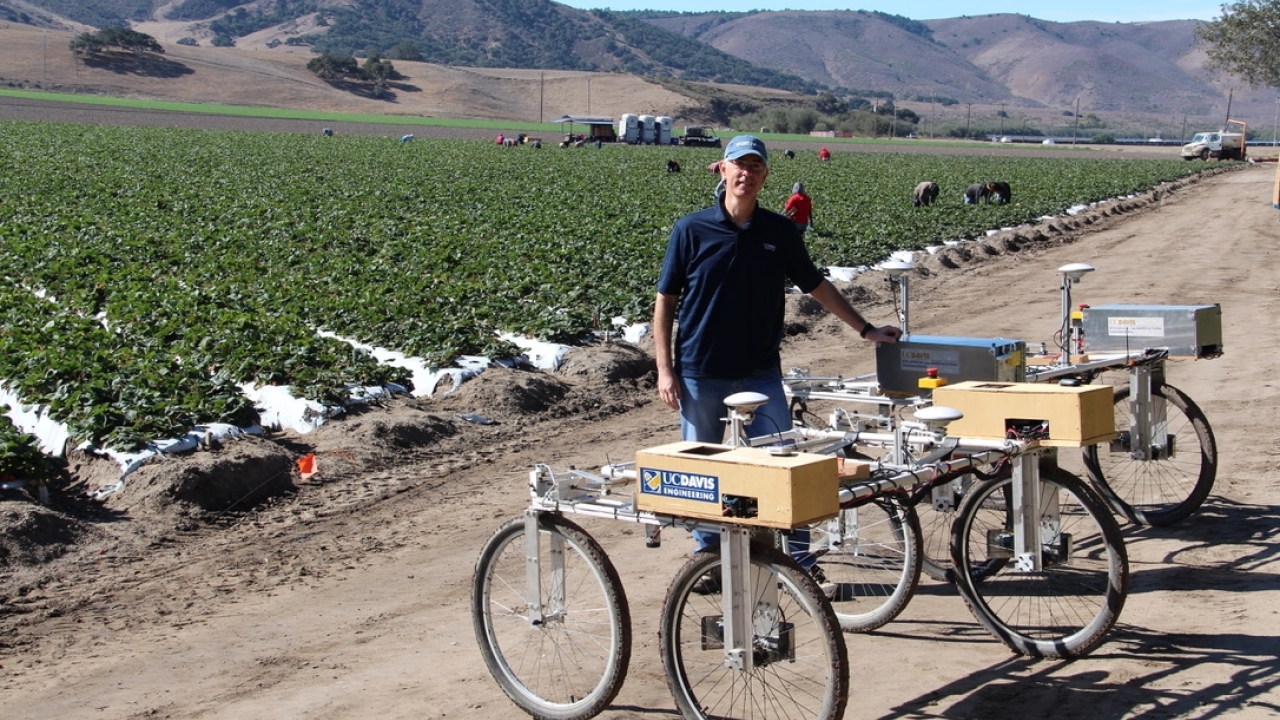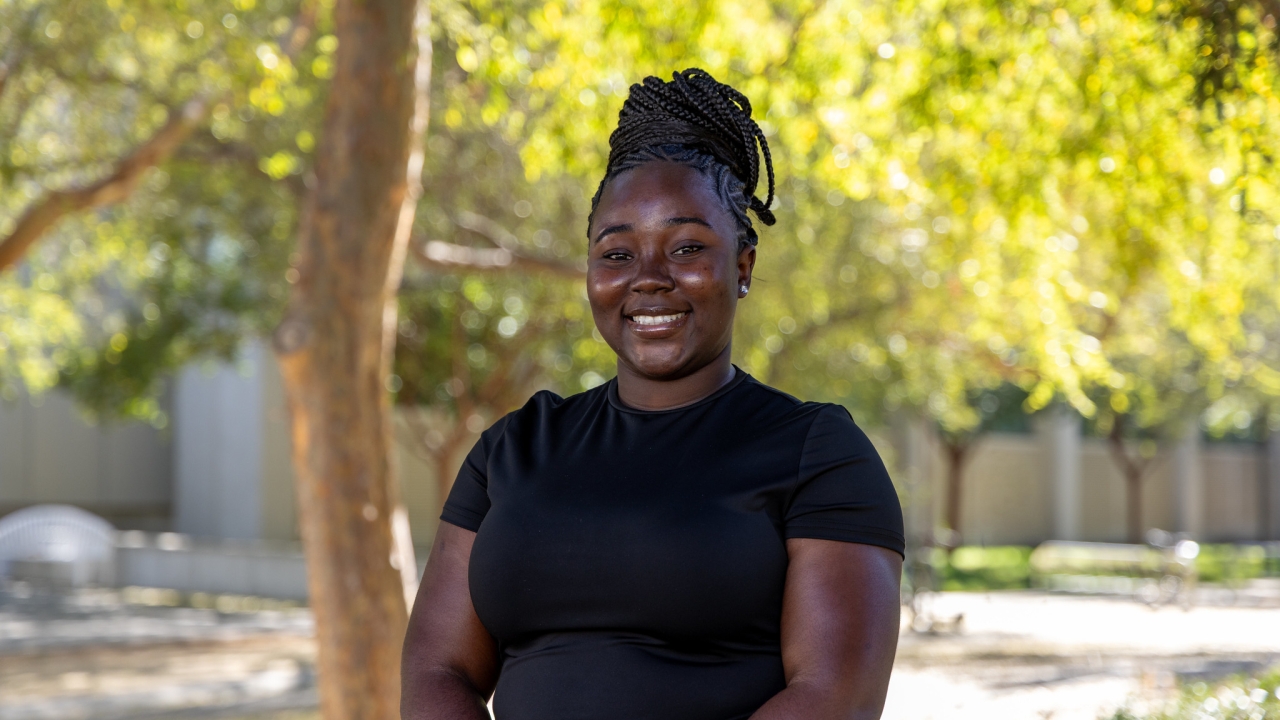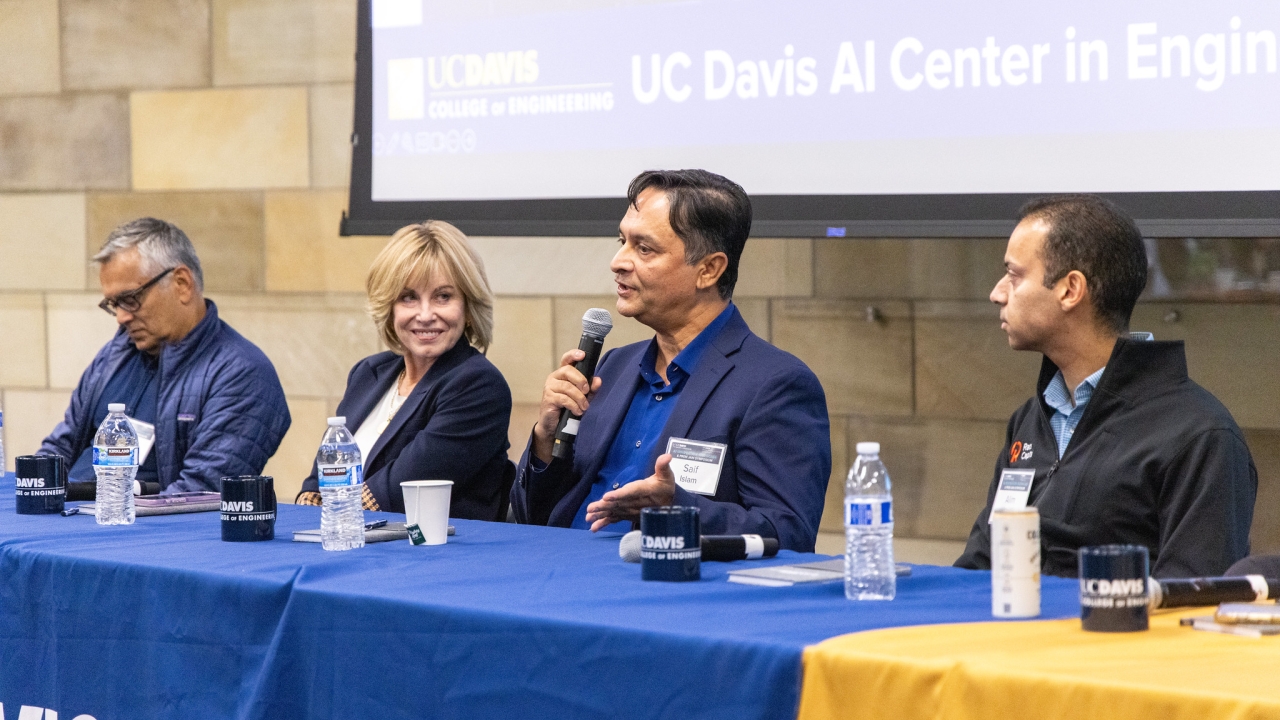
Horsing around with Music
Though animals respond well to music, humans are usually the ones that choose it. To help change this, a senior design team in the Department of Biological and Agricultural Engineering (BAE) developed a device that lets horses choose which music they want to listen to.
The team’s client, Dr. Susan Keen in the UC Davis College of Biological Sciences, wanted to give the horses in the UC Davis Equestrian Center more agency, as they can get bored in captivity without enrichment. After a lot of trial and error and advice from their advisor, BAE Professor David Slaughter, the team built a lightweight, portable frame with three positions, bounded by PVC pipe and an ultrasonic sensor.
“I liked how open-ended this project was,” said biological systems engineering major and team lead Sean Lupo. “We didn’t have anything that we were building on and we had to start from the ground up. It felt like this was a true engineering experience.”
When a horse walks into a position, it trips the sensor and starts playing one of three pieces of music—two jazz and a lullaby. Horses can then pick a favorite song or switch between them. The team also tracks how long each horse listens to each to determine which songs are most popular.
“Since humans have different personalities and different taste in music, we wondered if that applies horses too,” said Lupo.
The team—Lupo, Andrew Butler, Elijah Stockwell and Melanie Siu—tested the device with five horses. Initially, the horses were either afraid of the device or confused by it, but they got the hang of it. When the team would leave for an afternoon and let the horses freely use the device, the data showed that they listened for extended periods of time.
To the team’s knowledge, the device is the first of its kind and it will play a role in future research at UC Davis. The team wants to continue developing the device to include more effective sensors, visual cues and feedbags so the horses can eat while they’re listening.
This story was featured in the Fall 2022 issue of Engineering Progress.




